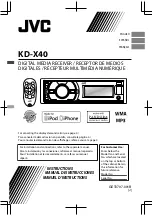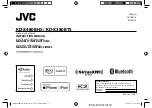
5.5.4 DSP Resource Usage
Description
To digitally process audio signals, such as a telephone call, the PBX must use a certain number of DSP (Digital
Signal Processing) resources. DSP resources are provided by the DSP card installed in the PBX. Since there
are a limited number of DSP resources, no further operations (e.g., telephone calls, playing an OGM) can be
performed if all resources are being used.
The following list shows some of the basic operations that require DSP resources.
•
IP extension call
•
IP trunk call
•
Conference
•
Accessing the Unified Messaging system (including recording calls)
•
OGM playback
•
Echo canceller
For IP extension and trunk calls, the number of required resources differs depending on the codec (G.711 or
G.729) used.
Note
The examples in this section are intended to illustrate the concept of DSP resource usage. More complex
situations may necessitate additional resources, and in some cases fewer resources may be necessary.
Examples of DSP resource usage
Fundamentally, the number of resources required for a given situation is the sum of the resources required for
each individual operation. The following examples illustrate DSP resource usage in various situations.
[IP trunk to IP extension]
IP Trunk
IP-PT
X
Y
PBX
G.729A
G.711
If an IP trunk call using the G.729 codec requires X number of resources, and an IP extension call using the
G.711 codec requires Y number of resources, then the number of resources required for a call from an IP
extension to an IP trunk requires X + Y number of resources.
[Unified Messaging access]
IP-PT
Y
X
PBX
G.711
UM
Playing back messages from or recording messages to the Unified Messaging (UM in the figure above) system
requires DSP resources, X in this example, in addition to the resources required for the G.711 codec (Y). The
total cost is X + Y.
Feature Guide
531
5.5.4 DSP Resource Usage
Summary of Contents for KX-NS300
Page 14: ...14 Feature Guide Table of Contents ...
Page 15: ...Section 1 For Your Safety Feature Guide 15 ...
Page 18: ...18 Feature Guide 1 1 1 For Your Safety ...
Page 19: ...Section 2 Call Handling Features Feature Guide 19 ...
Page 107: ...User Manual References 1 2 1 Basic Calling Feature Guide 107 2 5 4 Trunk Call Features ...
Page 193: ...User Manual References 1 4 2 Holding a Call Feature Guide 193 2 13 1 Call Hold ...
Page 324: ...324 Feature Guide 2 30 2 Outgoing Message OGM ...
Page 325: ...Section 3 Unified Messaging System Feature Guide 325 ...
Page 375: ...Section 4 Network Features Feature Guide 375 ...
Page 464: ...464 Feature Guide 4 3 6 Network ICD Group ...
Page 465: ...Section 5 System Configuration and Administration Features Feature Guide 465 ...
Page 560: ...560 Feature Guide 5 6 7 PING Confirmation ...
Page 561: ...Section 6 Appendix Feature Guide 561 ...
Page 578: ...578 Feature Guide 6 5 2 PFMPR Software File Version 004 2xxxx ...
Page 579: ...Feature Guide 579 Notes ...
















































